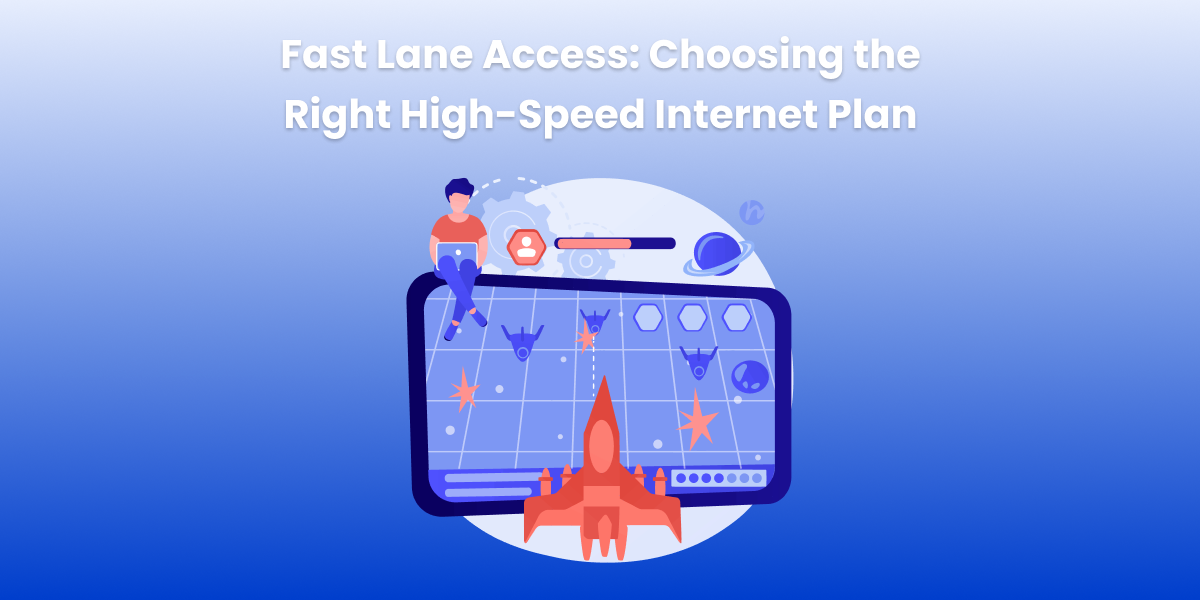Introduction
With more screens and devices relying on home internet connectivity today, glacial speeds can frustrate. But before upgrading to faster plans, navigating options from cable, fiber and emerging 5G and satellite players while optimizing for price and bandwidth needs careful consideration first. This definitive guide will illuminate key steps to choose the ideal high-speed internet plan matching digital lifestyles for American homes and businesses.
Defining high-speed internet Requirements
The first step is outlining current and future bandwidth needs across residents and devices based on usage patterns:
- Number of concurrent users and screens (multiple 4K video streams?)
- Types of activities like video calling, streaming, gaming
- Smart home devices connected now and growth plans
- Peak usage times resulting resulting in congestion
Tallying this device inventory and usage information paints a picture for required speed ranges looking ahead 2-3 years.
Establishing Budget Parameters
With desired speed ranges defined, the next step is outlining an acceptable recurring price range for monthly plans based on household or business technology budgets:
- Entry-level plans below $50/month
- Mainstream plans between $50-$100
- Premium plans above $100/month
Setting this pricing guardrail ensures services matched ultimately align with budget realities.
Assessing Local Infrastructure Capabilities
The availability and quality of wired internet connections vary drastically across American zip codes. Factors like neighborhood density, installation costs and local regulations play key roles influencing ISP buildout decisions tied to specific areas.
Thankfully the FCC provides an official fixed broadband map summarizing available networks across the country while individual ISPs outline eligibility online. Assessing this information reveals realistic speed tiers actually serviceable based on home address guiding plan evaluations later.
Auditing In-Home Network Gear
While headline download speeds grab attention, aging in-home routers, inconsistent device connectivity protocols and interference can throttle actual WiFi performance experienced locally.
Before committing to faster plans, an audit of in-home networking gear like routers, extenders and cabling helps locate bottlenecks. For example, upgrading to mesh systems or WiFi 6 routers promises bandwidth and range gains through newer standards and dedicated backhaul.
Comparing Major ISP Offerings Along Key Factors
With requirements defined and infrastructure limitations known, the next phase involves actually comparing available plan tiers across suitable ISP providers using this evaluation checklist:
Plan Attributes
- Contract Terms and Exit Fees
- Advertised Download/Upload Speeds
- Data Caps or Unlimited Data
- Price after introductory discounts
- One-time Fees like Installation and Modem Rentals
- Supported Connection Type – Cable, Fiber, 5G, Satellite
ISP Attributes
- Reliability and Uptime History
- Customer Support Service Quality
- Account Management Portal Usability
- Availability of Usage Metering Stats
- Policy on Data Throttling Practices
Technology Attributes
- Latency and Jitter for Real-Time Apps
- Actual Speeds Delivered During Peak Times
- Router Technology Supported like WiFi 6
- Upgrade Paths for Next-Gen Standards
This structured analysis clarifies providers and plans best matching usage needs and budget for today while positioning households for faster speeds unlocking future applications.
Negotiating Service Deals
With the ideal internet plan filtered down, subscribers maintain leverage negotiating rates, installation timelines, contract lengths and equipment bundles – especially when transitioning as an existing customer. Highlighting promotions offered to new subscribers could open doors to securing current subscriber concessions too. And polite persistence pays negotiating departments hold hidden flexibility satisfying customers with discounted deals.
Optimizing WiFi Performance Post-Install
Once fresh fiber or cable modems get mounted delivering fatter pipes, consistent device connectivity and peak WiFi throughput indoors requires optimizations like:
- Ethernet backhauling routers and devices
- Selecting optimal broadcast channels minimizing interference
- Upgrading router firmware and toggling settings like band steering
- Positioning routers centrally reducing dead zones
- Evaluating mesh systems blanketing larger spaces
Conclusion
Matching consumer digital lifestyles to the right high-speed solution remains imperative today. And prospects in historically underserved locales gain radically expanded options beyond outdated DSL thanks to massive fiber, 5G and satellite internet buildouts. Combining usage patterns with location constraints provides the perfect framework to filter optimum plans. And with forthcoming federal broadband subsidy programs, even budget-limited homes stand to gain fast lane access unlocking modern applications.






